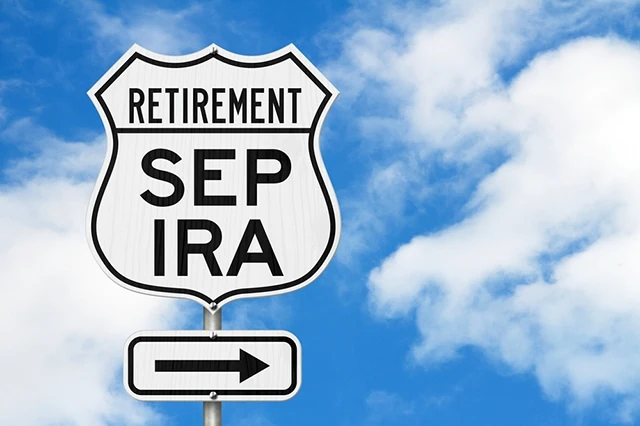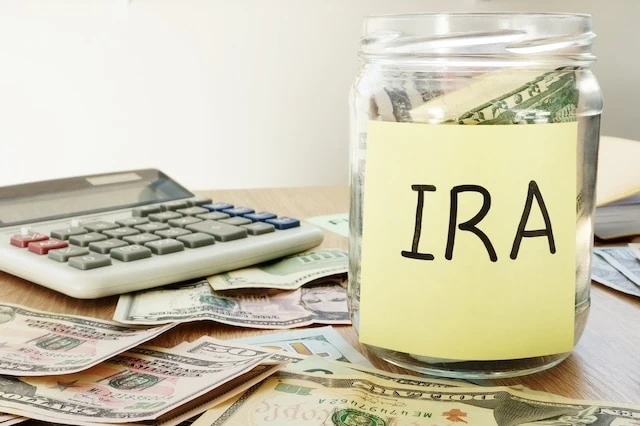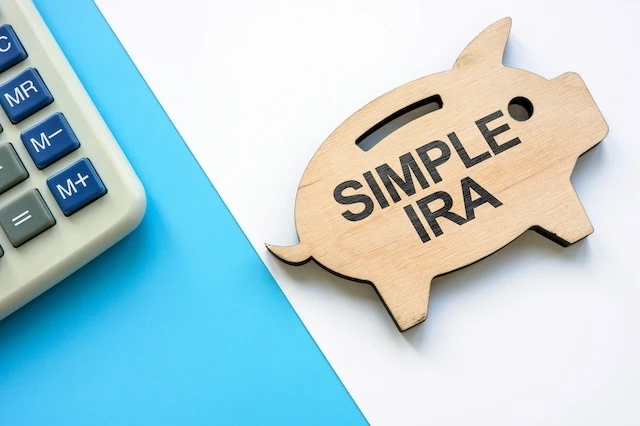While the 401(k) plan stands out as a widely embraced retirement savings option, it’s not the only path to financial security in retirement. Plenty of individuals successfully save for their golden years without ever contributing to a workplace retirement plan such as a 401(k).
But they need the right account.
It’s very unlikely you’ll save enough just by tucking money away in a high-yield savings account or a money market account. You want to invest your retirement funds so they grow into a nest egg big enough to sustain you in retirement.
If your workplace doesn’t offer a 401(k)—and many don’t—or you’re self-employed, take heart. You can save for retirement without a workplace retirement plan like a 401(k), and today, I’m going to explore several of the methods available to you.
And remember: The earlier you begin investing for retirement, and the more money you invest early on, the easier it will be for your funds to accumulate.
Featured Financial Products
Table of Contents
What Can I Do if I Don’t Have a Workplace Retirement Plan Like a 401(k)?

According to the U.S. Bureau of Labor Statistics, 68% of employed Americans have access to a 401(k). But that means nearly a third of the country’s employees don’t have access to one.
Fortunately, it’s not the only way to save for your future. Virtually all American adults can sign up for several types of retirement accounts—they can open one or contribute to several simultaneously to take advantage of their different strengths. In fact, many people who contribute to a 401(k) also build their retirement savings using one or more of the accounts I’m about to discuss.
How to Save for Retirement if Your Employer Doesn’t Offer a Retirement Plan Like a 401(k)

Rather than a 401(k), you can start a retirement fund with one or more of the accounts below.
1. Individual Retirement Accounts (IRAs)

Individual retirement accounts (IRAs) have been helping people save for nearly 50 years—and giving them a tax break to do it. Those who want an IRA can choose a traditional IRA, a Roth IRA, or both.
Traditional IRA vs. Roth IRA

While both of these accounts have tax advantages, their benefits differ.
A traditional IRA is a tax-deferred account. You fund the account with pre-tax dollars, and as long as you and your spouse (if you have one) don’t have access to a workplace retirement plan, your contributions are fully tax deductible, lowering your tax burden for the year. If you or your spouse are covered by a workplace plan, whether and how much of your contribution is deductible depends on your income.
Related: IRA Contribution Limits for 2024 and 2025: Save More
As your IRA investments grow over the years, you don’t pay taxes on your earnings until you make withdrawals during retirement. Also, you’ll likely be in a lower tax bracket in retirement than when you contributed to your IRA, so it’s an ideal place to store any investments that don’t have tax advantages.
A Roth IRA operates differently. You fund a Roth with post-tax money (money that has already been taxed). Money grows tax-free like a traditional IRA, but when you withdraw money in retirement, you don’t have to pay any taxes. You should contribute to a Roth IRA at any point in your life when you think you’ll have a higher tax bracket in retirement than your current one.
Featured Financial Products
Not Everyone Can Contribute to a Roth IRA

Another key difference between traditional and Roth IRAs is who is eligible to contribute. Anyone can contribute to a traditional IRA, no matter how much they make. Income limits can sometimes come into play affecting whether their contributions are tax-deductible, but they can still participate.
Related: Best Vanguard Retirement Funds for an IRA
Meanwhile, depending on how much you make, you could be shut out of a Roth. In 2024, anyone with a modified adjusted gross income of over $161,000 (single or head of household) or $240,000 (married filing jointly) is ineligible to contribute to a Roth IRA that year ($165,000 and $246,000 in 2025, respectively).
The “phase-out range” of workers who can make partial contributions, but not the full limit, is $146,000-$161,000 (single or head of household) and $230,000-$240,000 (married and filing jointly) in 2024 ($150,000 to $165,000 for single and head-of-household filers and $236,000 and $246,000 in 2025).
If eligible, some people choose to contribute to both types of accounts so they have both taxable and tax-free withdrawal options during retirement.
Related: Best Schwab Retirement Funds for an IRA
You will generally face a 10% penalty for withdrawing money from both IRAs and Roth IRAs before age 59½, though there are some exceptions. (Additionally, with Roth IRAs, at least five years must have passed since you first contributed before you can withdraw penalty-free.)
While you can choose to take distributions at or after age 59½, traditional IRAs require people to start taking distributions—and paying taxes on them—starting at age 73 (this rises to age 75 in 2033). However, Roth IRA withdrawals aren’t required at all until after the death of the owner.
IRA Contribution Limits

They’re not a lot, but you’ve got to start somewhere. For 2024, the combined contribution limit is $7,000 for traditional and Roth IRAs ($7,000 in 2025). So if you own one type of IRA, you can max out that account with $7,000 in contributions ($7,000 in 2025). If you own both, you can still only contribute $7,000 between them, but you can do so in whatever ratio you’d like ($7,000 in 2025).
Thanks to “catch-up” contributions, if you’re 50 or older, you can shovel an additional $1,000 into savings each year, for a total of $8,000 in 2024 ($8,000 in 2025).
That said, you can only contribute up to the amount of earned income you’ll claim for a given year. So if you only earned $5,500, your contribution limit is $5,500, not $7,000 (or $7,000 in 2025).
Related: 2024 Will See Higher IRA Contribution Limits
2. Health Savings Accounts (HSA)

In terms of taxes, it’s tough to beat the triple tax benefits that a health savings account delivers. In fact, I recommend that anyone who qualifies for an HSA not only get one, but max it out every year and, if they can, invest in their HSA.
In a nutshell, here are the three tax benefits of HSAs:
1. Those who have HSAs through their employers can make pre-tax contributions. Anyone self-employed who opens an HSA can deduct their contributions from their taxes.
2. Earnings grow tax-free.
3. At any age, you can take tax-free withdrawals if the money is used for qualified medical expenses.
Just know that if you take money out of your health savings account to pay for anything other than a medical expense, you’ll have to pay taxes on it. And if you’re younger than 65, you’d have to pay a 20% penalty as well, so that’s something to avoid. At age 65 and beyond, there is no penalty, no matter how you spend the money. You just pay ordinary income tax on anything you take out if used for non-medical expenses. You’re never required to start taking distributions.
Related: Best Fidelity Funds to Hold in an HSA
To qualify for an HSA, you must be covered under a high-deductible health plan (HDHP), not have any other health coverage, not be enrolled in Medicare, and you can’t be claimed as a dependent on someone else’s tax return.
This type of account has so many tax advantages and can be used toward medical expenses at any age without penalty, making it an excellent addition to any retirement plan.
Related: Best Vanguard Funds to Hold in an HSA
HSA Contribution Limits

The 2024 contribution limits for an HSA are $4,150 for self-coverage and $8,300 for family coverage. For 2025, those limits rise to $4,300 and $8,550, respectively. And anyone 55 or older can contribute $1,000 more per year as a catch-up contribution.
Related: Best Vanguard Funds to Hold in an HSA
3. Taxable Brokerage Accounts

Even if you don’t currently have a job, you can invest with a taxable brokerage account. There are no income limits. The only requirements for a taxable investment account are to be an adult (although there are ways to open a brokerage account for a child, too) and have a Social Security number or taxpayer identification number.
The downside of this type of account is that there is no tax benefit. For this reason, it’s best if you pair it with a tax-advantaged retirement account.
A perk of a taxable brokerage account is that you have complete control over what investments you choose, which isn’t the case with all retirement plans. Stocks, bonds, exchange-traded funds (ETFs), mutual funds, you name it. There are a vast variety of investments to choose from.
You can select very liquid investments and are allowed to sell and cash out at any time with no penalty, although it’s recommended to hold investments long term for growth and to pay less in taxes. Distributions are never required at any age.
Like Young and the Invested’s Content? Be sure to follow us.
Taxable Brokerage Account Contribution Limits

There aren’t any contribution limits for a taxable brokerage account. You can invest as much as you want.
How to Save (a Lot) for Retirement if You’re Self-Employed

If you’re self-employed, you have a few other options at your disposal.
Featured Financial Products
Sign Up for Young and the Invested’s FREE Newsletter: The Weekend Tea
4. Simplified Employee Pension IRA (SEP IRA)

Traditional and Roth IRAs are great, but they come with pretty meager contribution limits. If you work for yourself, like a freelancer, or own a business, one tax-advantaged way to put aside a bigger chunk of change for retirement is a simplified employee pension plan.
A SEP IRA, like a 401(k), is a tax-deferred retirement plan. You don’t have to pay taxes on any interest or capital gains until you make withdrawals.
It’s easy for employers and self-employed folks to set up a SEP IRA plan, and the administrative costs are low.
Aside from a few exceptions, withdrawals made before age 59½ face a 10% penalty, in addition to ordinary taxes. The account holder must start taking distributions by age 73. This age will rise to 75 starting in 2033.
Related: Best Fidelity Retirement Funds for an IRA
SEP IRA Contribution Limits

Unlike a 401(k) plan, employees can’t contribute to a SEP IRA. Instead, employers establish these accounts on behalf of their employees and are the sole contributors. For 2024, employer contributions to a SEP IRA cannot be more than the lesser of the following:
— 25% of the employee’s compensation
— $69,000 ($70,000 in 2025)
For the self-employed, the same SEP contribution limits apply. However, your compensation is equal to your net earnings from self-employment, minus any tax deductions for contributions to your own SEP IRA and half of your self-employment tax.
This requires a special calculation, the effective result of which is that contributions by self-employed people to their own SEP IRAs can’t be more than 20% of the net earnings from their business.
Note: Unlike with IRAs and HSAs, there are no catch-up contributions for SEP IRAs.
Related: SEP IRA vs. Roth IRA: What’s the Difference?
5. Savings Incentive Match Plan for Employees IRA (SIMPLE IRA)

Employers with 100 or fewer employees with at least $5,000 in compensation in the preceding calendar year are allowed to create a SIMPLE IRA. These retirement accounts are funded with pre-tax income, and the earnings grow tax-deferred.
When you take distributions, you pay income taxes on that money. Any withdrawals taken before age 59½ also face an additional 10% tax. But beware: If you take out money within the first two years of participating in the plan, that additional tax rises to 25%.
Currently, you’re required to start taking distributions at age 73, but it will change to age 75 beginning in 2033.
SIMPLE IRA Contribution Limits

SIMPLE IRA contribution limits are lower than a SEP IRA, but they’re still significant. For 2024, the maximum employee contribution from their salary to a SIMPLE IRA cannot be more than $16,000 ($16,500 in 2025). For employees who participate in any other employer plan during the year and have elective salary deductions under those as well, the total amount they can contribute is limited to $23,000 ($23,500 in 2025).
Related: Best Schwab Retirement Funds for a 401(k) Plan
If the SIMPLE IRA plan allows catch-up contributions, the limit for people 50 through 59 would be an additional $3,500 and up to $5,000 for those 60 through 63.
Typically, the employer is required to match each employee’s salary reduction contributions dollar-for-dollar up to 3%. The employer can decide to make a lower matching contribution, but it must still be at least 1% and for no more than two out of five years. Employees must be given reasonable notice about the lower match.
An exception to the 3% rule is made for employers who make nonelective contributions instead. Rather than matching contributions, an employer can make nonelective contributions of 2% of every eligible employee’s compensation.
Related: Best Fidelity Retirement Funds for a 401(k) Plan
These contributions must be made regardless of whether the employee makes salary reduction contributions. An employee’s salary of up to $345,000 is taken into account when figuring out the contribution limit for 2024 ($350,000 in 2025).
6. Solo 401(k)s

A solo 401(k) is for business owners or self-employed folks with no employees or a single employee who is the spouse. Just like a standard 401(k), these are tax-deferred retirement accounts.
If you previously had a 401(k) and then become self-employed, you can roll over that money into your solo 401(k) to stay more organized.
Related: Best Vanguard Retirement Funds for a 401(k) Plan
When you take withdrawals during retirement, the money is taxed as ordinary income. Withdrawals made prior to age 59½ also face a 10% penalty. Starting at age 73, distributions are required. In 2033, the age will increase to 75.
Like Young and the Invested’s Content? Be sure to follow us.
Solo 401(k) Contribution Limits

They’re big. Essentially, for 2024 the annual solo 401(k) contribution limit is $69,000 or 100% of earned income, whichever is less ($70,000 in 2025). And if you’re 50 or older, you can add another $7,500 on top of that with a catch-up contribution in 2024 or 50 to 59 in 2025. Starting in 2025, individuals 60 to 63 can contribute up to an additional $11,250.
Related: Retirement Plan Contribution Limits and Deadlines for 2024 and 2025
But it’s a little more complicated than that. People who own a solo 401(k) can make contributions to their own account as both the employee and employer:
— As an employee, you can put away as much as 100% of your earned income—up to the annual contribution limit, which for 2024 is $23,000 for those younger than 50 ($23,500 in 2025). With a catch-up contribution of $7,500, the limit for people 50 and older is $30,000 (or $30,500 in 2025 for those 50 to 59 and $34,750 if 60 to 63).
— As an employer, you can also pump in employer non-elective contributions up to 25% of your compensation until you reach the combined total limit.
When you add up both types of contributions, the grand total cannot exceed $69,000 for 2024 for those younger than 50 ($70,000 in 2025). If you’re 50 or older, the grand total is even grander: $76,500 ($77,000 in 2025).
Sign Up for Young and the Invested’s FREE Newsletter: The Weekend Tea
How Can I Save for Retirement On My Own?

There are many paths for how to save for retirement on your own, without the need for a 401(k). Providing you have earned income, an IRA is an excellent place to begin.
Related: How to Start a Retirement Plan [Build Your Retirement Savings]
If you qualify for an HSA, it’s a great addition to retirement plans as it has several tax benefits, including tax-free withdrawals for any money spent on qualifying health care. For retirement options with higher contribution limits, consider a solo 401(k), SEP IRA, or SIMPLE IRA (if eligible). Taxable brokerage accounts have no limits.
What is the Fastest Way to Save for Retirement?

It’s much easier to save enough for retirement if you start when you’re young. However, many people need to do some catching up in later years.
Related: Should You Max Out Your 401(k) Each Year or Invest Elsewhere?
To save for your retirement quickly, open one or more investment accounts. Preferably, these are tax-advantaged accounts. An HSA and IRA are great places to start. If you can afford to do so, max out these accounts and then open another investment account. Options vary depending on your work.
Many accounts offer catch-up contributions if you’re 50 or older. Make sure to contribute as much as possible for your age.
Featured Financial Products
How Do You Retire If You Don’t Have a 401(k)?

Anyone who isn’t offered a 401(k) through an employer should ask what other retirement account options are offered.
If your job offers no type of employer-sponsored account, there are still retirement account options available to you, such as an IRA or HSA. You can also invest through a standard brokerage account.
Self-employed workers and small-business owners have additional options. Depending on whether or not they have employees and, if so, how many, a solo 401(k), SEP IRA, and SIMPLE IRA are more retirement account options.
Related: 7 Best Self-Employed Retirement Plans [2024]
Is a 401(k) Really Important?

It’s extremely important to save toward retirement, but a 401(k) isn’t the only way to do so. If your employer offers a 401(k), always contribute at least up to the employer match amount.
Workers who aren’t offered a 401(k), whether because they are part-time, self-employed, or any other reason, should open up other accounts to invest for retirement.
Please Don’t Forget to Like, Follow and Comment

Did you find this article helpful? We’d love to hear your thoughts! Leave a comment with the box on the left-hand side of the screen and share your thoughts.
Also, do you want to stay up-to-date on our latest content?
1. Follow us by clicking the [+ Follow] button above,
2. Subscribe to The Weekend Tea, our weekly newsletter to read more about investing, spending, taxes, and more, and
3. Give the article a Thumbs Up on the top-left side of the screen.
4. And lastly, if you think this information would benefit your friends and family, don’t hesitate to share it with them!





